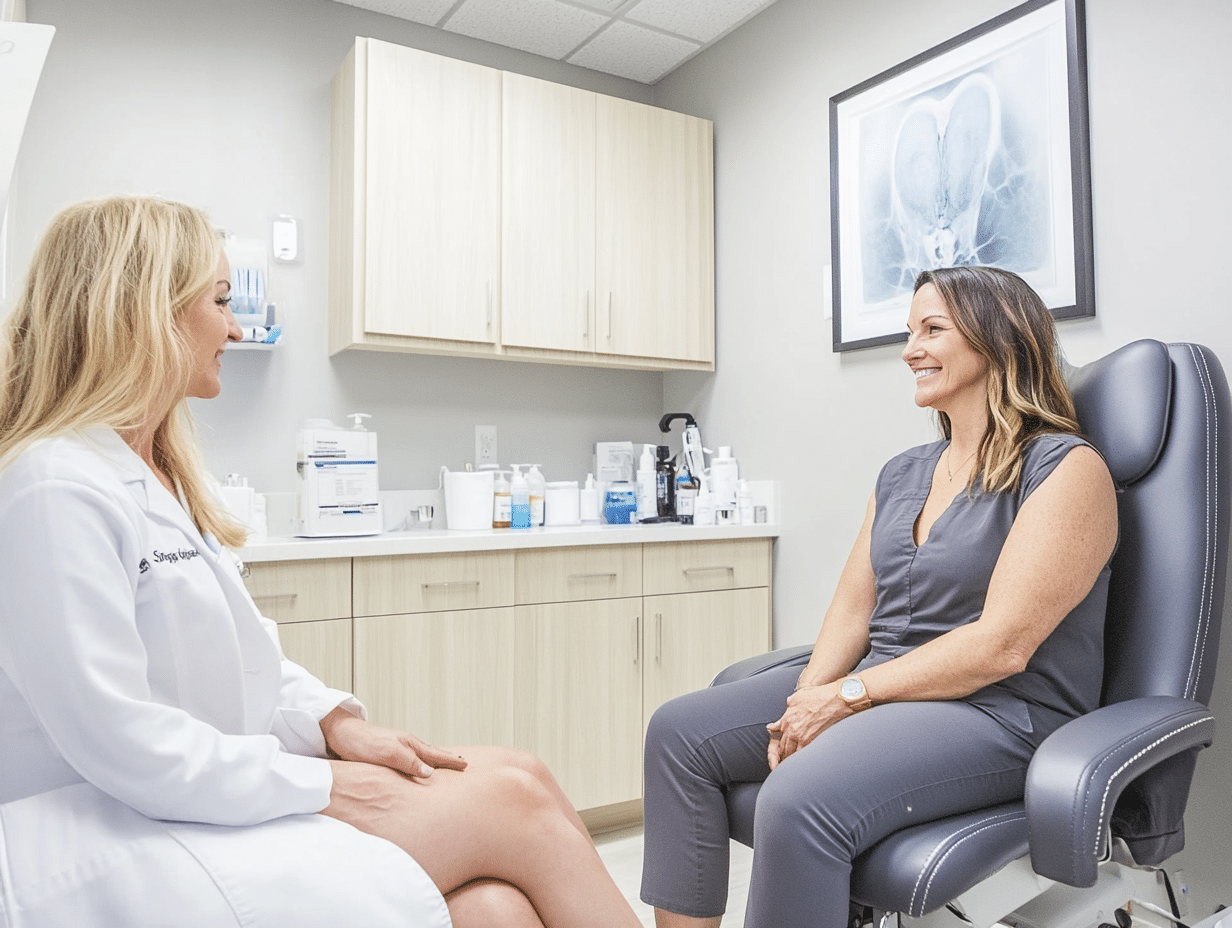Sclerotherapy
Sclerotherapy is a minimally invasive treatment used to treat varicose and spider veins. By injecting a solution directly into the affected veins, this procedure helps them collapse and eventually disappear, improving both cosmetic appearance and alleviating symptoms such as pain, swelling, and aching. It’s an effective treatment option for both small spider veins and larger varicose veins.
How Sclerotherapy Works
The sclerotherapy process is straightforward and performed in-office. During the procedure:
• A healthcare provider evaluates your veins and discusses your medical history.
• A fine needle is used to inject a sclerosing solution (either saline-based or detergent-like) into the affected veins, causing them to collapse and close.
• Over time, the body naturally absorbs the treated veins, and blood flow is redirected to healthier veins.
Compression stockings may be recommended post-treatment to aid healing. Sessions last 30-60 minutes, and multiple treatments may be required for larger veins.

Benefits of Sclerotherapy
Sclerotherapy offers several key benefits:
• Improves appearance: Reduces the visibility of spider and varicose veins, giving legs a smoother appearance.
• Non-surgical: Minimally invasive with no need for general anesthesia.
• Symptom relief: Alleviates discomfort, swelling, and heaviness associated with varicose veins.
• Quick treatment: Most sessions take under an hour, with long-lasting results.
• No downtime: Resume normal activities quickly, though compression stockings may be required.

Types of Sclerotherapy
There are two main types of sclerotherapy, each suited for different kinds of veins:
• Liquid Sclerotherapy: Ideal for smaller spider veins and superficial varicose veins. A liquid solution is injected directly into the vein.
• Foam Sclerotherapy: A foam solution is used for larger varicose veins, allowing better coverage of the vein’s surface and more effective treatment.

Indications for Sclerotherapy
Sclerotherapy is an excellent option for treating:
• Spider veins: Small red or blue veins visible on the skin’s surface.
• Varicose veins: Larger, swollen veins that often cause discomfort.
• Symptoms: Pain, swelling, and heaviness in the legs.
• Cosmetic improvement: Enhances the appearance of legs by eliminating visible veins.

Risks & Recovery
While sclerotherapy is safe and minimally invasive, there are some risks and side effects to consider:
• Temporary discomfort: Some patients may experience mild cramping or discomfort during the injection.
• Bruising and swelling: These effects are common but temporary.
• Skin discoloration: Dark spots may appear over treated veins, fading over time.
• Blood clots: Rare but possible, especially with larger veins.
Aftercare:
• Wear compression stockings as recommended to promote healing and prevent new veins from forming.
• Avoid prolonged standing, hot baths, or sun exposure for a few days post-treatment.
• Visible improvements can be seen within a few weeks, with final results appearing over the course of several months.

Sclerotherapy vs. Other Treatments
Sclerotherapy is often compared with other vein treatments, such as:
• Laser Therapy: Better for smaller veins, while sclerotherapy is more effective for larger or deeper veins.
• Radiofrequency Ablation: Uses heat to close larger varicose veins.
• Vein Stripping Surgery: Reserved for severe cases of varicose veins and involves surgical removal of the vein.
Request a consultation
Ready to achieve your ideal breast size and shape? Schedule a consultation with our experienced surgeons. We’ll discuss your goals, answer your questions, and create a customized plan tailored to your needs.
CONTACT US